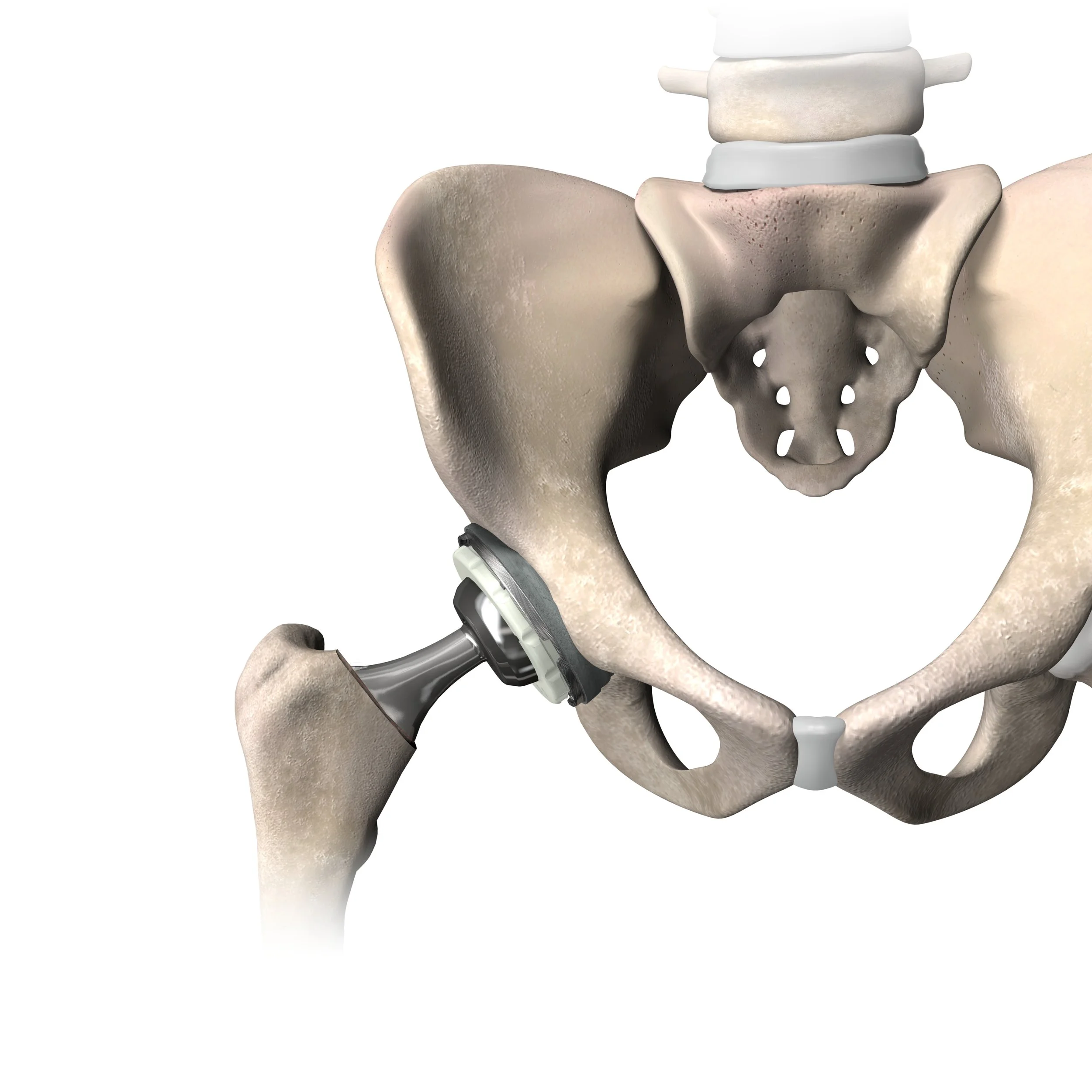What is a Total Hip Replacement?
A Total Hip Replacement (THR) is a surgical procedure that involves replacing the damaged or worn surfaces of the hip joint with an artificial joint, known as a prosthesis. This is typically recommended for patients experiencing significant hip pain and loss of mobility due to arthritis or other joint diseases.
The Procedure
Hip replacement surgery involves the removal of the damaged femoral head (the ball of the hip joint) and acetabulum (the socket), which are then replaced with precisely fitted artificial components. These components are made from a combination of high-quality materials such as metals, ceramics, and wear-resistant plastics. The choice of materials and implant type depends on individual factors including age, activity level, bone quality, and overall health.
Benefits of Hip Replacement
Total hip replacement is considered one of the most effective and durable orthopaedic surgeries. Key benefits include:
Significant pain relief
Improved joint function and mobility
Enhanced quality of life
High implant longevity (over 80% last beyond 20 years)
Anaesthesia and Pain Management
Your anaesthetic plan will be discussed in consultation with our specialist anaesthetists. Most patients receive a spinal anaesthetic to provide effective pain relief, while still allowing for early mobilisation within hours of surgery.
Customised Implant Selection
Just as no two patients are alike, no single implant suits everyone. Your orthopaedic surgeon will select an implant system tailored to your:
Bone shape, size, and density
Age and activity level
Pattern of arthritis and joint wear
During surgery, a large inventory of implant options enables precise customisation for each patient, helping to restore leg length, muscle balance, and joint mechanics.
For patients with complex anatomy or prior surgeries, custom 3D-printed implants may be considered.
Preparing for Surgery
A well-prepared patient generally experiences a smoother recovery. Preparation may include:
A pre-operative exercise program with your physiotherapist
Crutch training
Smoking cessation is mandatory. Patients will not be booked for surgery while still smoking.
Weight loss if advised
A balanced diet with reduced alcohol intake
Using an antiseptic wash such as Phisohex or chlorhexidine in the days leading up to surgery
Recovery Timeline
Weight Bearing & Walking: Most patients begin walking with assistance within 4–6 hours post-op.
Hospital Stay: Usually 2–3 nights
Mobility Aids: Crutches are generally used for 2 weeks post-op; some prefer a cane for a short time after.
Return to Work: 2–6 weeks depending on your job.
Driving: 4-6 weeks
Travel: Flights under 6 hours are safe shortly after discharge.
Before leaving hospital, you will receive personalised guidance on tasks such as climbing stairs and getting in/out of a car.
Medication Management
Most regular medications can be continued, except those that affect blood clotting. Medications to usually cease before surgery include:
Warfarin, Plavix, Xarelto (as advised by your surgeon)
Fish Oil, Ginkgo, Ginseng, Garlic
Hormone Replacement Therapy (HRT)
Oral Contraceptive Pill (OCP)
Your preoperative physician review will help with which medications require cessation.
Aspirin for cardiac or stroke prevention should usually be continued.
Rehabilitation Options
Most patients return home after hospital, supported by physiotherapy. For those needing extended support, rehabilitation unit stays can be arranged, either at the hospital or closer to home if preferred.
Risks and Complications
Hip replacement surgery is very safe, but like all surgeries, it carries risks:
Infection (less than 1%)
Blood clots (DVT)
Dislocation
Leg length discrepancy
These will be discussed in full during your pre-operative consultation.
Long-Term Expectations
Most patients return to low-impact activities such as:
Walking
Swimming
Cycling
Tennis
Skiing
High-impact activities like running may require further discussion. If in doubt, check with your surgeon before returning to any intense physical activity.
Long-Term Follow-Up
We recommend periodic follow-up to monitor your hip replacement. X-rays and clinical reviews are typically done every 5 years to ensure everything is functioning optimally.

